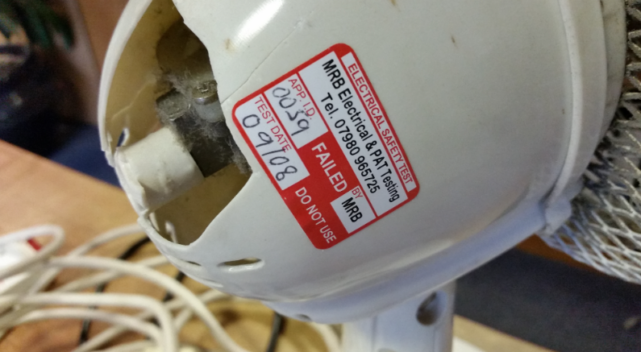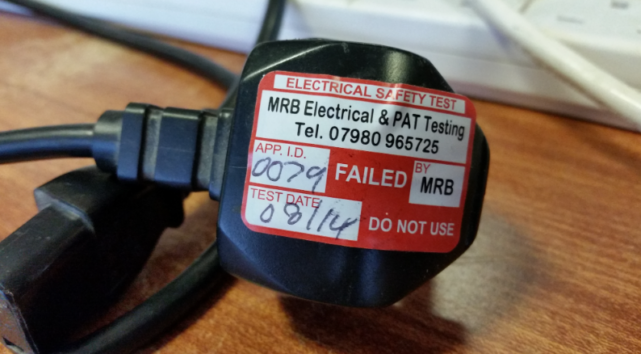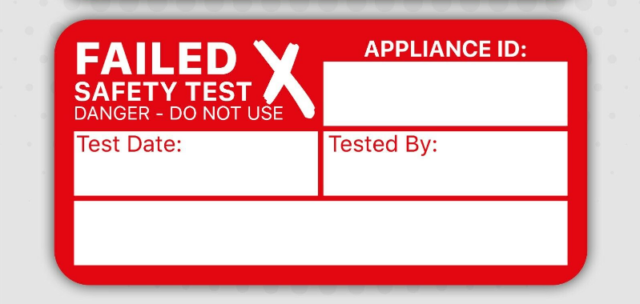PAT testing is the tried and trusted test method used to evaluate the optimum performance of an electrical appliance. The test results pass the verdict of whether an appliance can be in the state to be used further. Upon receiving the pass sticker, it is confirmed that a particular appliance can be continued with its usage electricity
Failed PAT Tests

As we just read that an appliance should receive a pass status to continue with its operation. Have you ever thought, what if an appliance fails the test? What happens after it gets a fail result? In this article, we will know what steps need to be taken after an appliance in your facility fails the PAT test. The primary objective of a PAT test is to make sure that a machine is safe for the workers and the public as well.
It helps find all faulty devices that a business has been using and also ensures that they are repaired or replaced before further use. Your business is the consumer of the PAT testing and it will receive the test report. The report contains the details of the procedure, findings, the reasons for failure, and recommendations on whether the appliance should be replaced or repaired.
Reasons For PAT Test Failure

Below listed are some of the examples of PAT test failure to give you an idea of what is a safe machine. Users and the duty holder must have some basic idea of the appliance safety so that they are aware of it, while they operate certain machinery.
● Incorrect Fitted Fuse
When it comes to installing new electrical appliances there is a set of agreed standards. Incorrect fuse fitting is one of the most common causes of failing PAT tests. This happens only with new machinery, as incorrect fuse fitting will not allow the machinery to run. Coming to modern appliances, a machine that uses less than 700W of power should get fitted with a 3A fuse.
On the contrary, the machines using above 700W of power should be installed using a 13A fuse. If an event occurs when the appliance enters a faulty condition, there will be a surge of current and the fuse will get blown away. You will have to break the circuit or stop the current from traveling down the wire.
● Damaged Or Cracked Plugs

Any damage or cracks in the plug, or any kind of excessive damage on the appliance itself that may result in exposing the electrics, will fail the test. A damaged or cracked plug will have the potential risk of electric shocks when a user is trying to plug an appliance in or out of the socket. A cracked case of the plug can also expose the electrical wires or other elements present inside. This will also result in failing the results.
You can correct the plug to get the test passed. To do so, you will have to replace all broken or cracked plugs. Getting the plug fixed using insulation tape is not the solution and this fix is not accepted by the PAT engineer. Before your PAT testing, you should remove all of them from the facility.
● Insulation Of The Earth Pin
Any plug when attached to the left of the cable has the earth pin partly insulated that the plug should not have. When such a plug is used to plug in the appliance, it will not work as expected. Such items are usually counterfeit cables, stamped as meeting the expected results, but they don’t. Only swapping the plug will not be as effective as you cannot say if the rest of the cable was manufactured as per requirements and using the correct materials.
To avoid all such circumstances, we recommend you remove them completely from the service. You can also contact the supplier for getting replaced with standard plugs that will not fail the PAT test.
● Non-Insulated Neutral And Live Pins
Though the plugs were not manufactured in the style for several years now, the plugs still get cropped by the manufacturers after a certain period. In the modern plugs that are being manufactured these days, the Neural and Live pins are insulated to avoid the fingers of any user from developing connections. That said, when the plug is partially inserted, the chances of fingers connecting with the metal remains high. Furthermore, if the plug and socket are of apt shape and size, no contact will be made by the users through pins, until it is disconnected from the source.
There are several instances when a metal pin was used to remove a stuck plug, and the user made contact, thereby resulting in some accidents. The practice is not safe and can injure a user, cause fire, or even create some major damage. All such plugs, if spotted by the PAT engineer, will ask for a replacement.
● Damaged Flex

When you have a wire installed for several years, there are chances that it must have been damaged somewhere. Excessive wear and tear of the cable are considered dangerous, and any such item if spotted should be instantly removed. If not replaced, the flex will keep getting more destroyed and will potentially have bare wires visible out of it. This results in a shock risk of the wire. In all cases, you should choose to disconnect the damaged flex from the appliance and replace it with a new one.
If a PAT engineer spots such a thing at your facility, they will ask to check all the wiring and get it replaced wherever possible. Another round of tests will be performed before you can start operating on the systems again.
Conclusion
The failure of the PAT test depends on certain circumstances and also the results are recorded for future reference. When an appliance fails, it is inspected whether or not it can be repaired. If not repairable, the engineer will ask you to get it replaced with a new one. If the appliance is eligible for repair, additional rounds of tests are performed after getting the appliance repaired, for safety.




